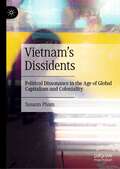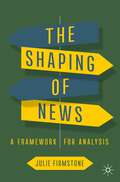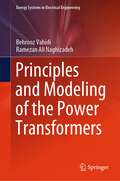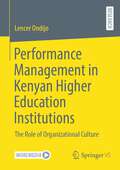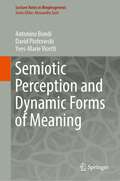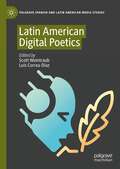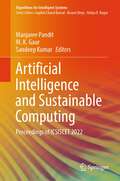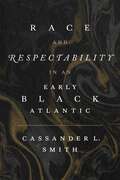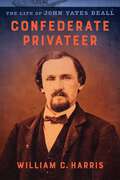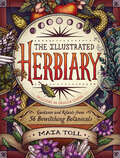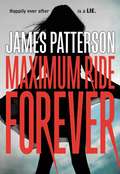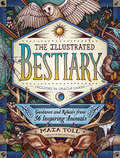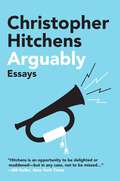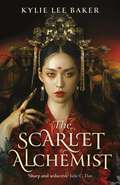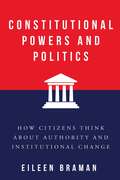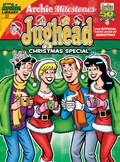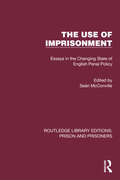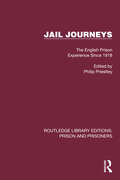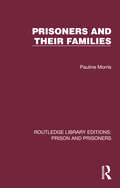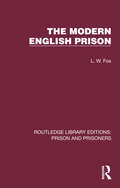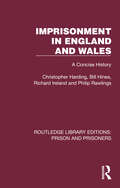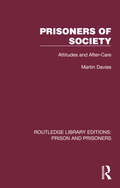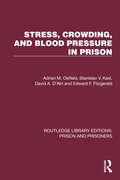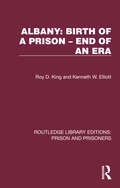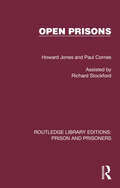- Table View
- List View
Vietnam’s Dissidents: Political Dissonance in the Age of Global Capitalism and Coloniality
by Susann PhamThis book is the first ethnography on Vietnam’s contemporary dissident movement. As a country that became known and is still remembered as one of the last remnants of Communist revolutions, Vietnam has managed to lift itself from one of the poorest war-torn post-colonies to one of the fastest growing market economies in Southeast Asia. Yet, while holding on to the legacy of a communist-led liberation movement, the present-day Communist Party of Vietnam (CPV) finds itself subject to political challenges from below. In recent years, dissident voices critical of the party-state's malgovernance over social, economic and environmental issues have mushroomed across classes, generations and provinces. Based on extensive ethnographic data, this book explores distinct political practices and political ideas of Vietnam's dissidents. It examines different anti-capitalist and anti-authoritarian practices of democracy, labour, peasant and religious activists and reveals that anti-capitalist and anti-authoritarian practices are—at times—motivated by nationalist, anti-communist and statist ideas and ideologies. Understanding this dissonance between political practices and political ideas within the context of global capitalism and coloniality lies at the heart of this book.
The Shaping of News: A Framework for Analysis
by Julie FirmstoneThis book provides readers with the understanding required to analyse the range of key factors that shape the production of news, and to assess their implications for the role of news and journalism in democracy. It brings existing research together under the umbrella of a central organising framework to explore how news and its production is shaped by a multiplicity of factors including the norms, values, role perceptions and ethics associated with journalism as a profession, the role of news sources, the changing character and significance of news audiences, the aims and objectives of news organisations, and the political, economic and social contexts within which news is produced. Exploring these factors in depth, using examples, and considering the changing conditions of news production, the chapters chart significant changes, challenges, and responses to provide the essential background for understanding the consequences of current transformations for the democratic qualities of news.
Principles and Modeling of the Power Transformers (Energy Systems in Electrical Engineering)
by Behrooz Vahidi Ramezan Ali NaghizadehThis book describes many aspects of power transformers. And it mainly provides valuable knowledges such as two deals with power transformer construction, different types of transformers and connections, power transformer core modelling, and the low-frequency and mid-frequency modelling of transformers. Moreover, it also introduces a new method for high-frequency modelling of transformer which can attract many students learning the power transformer research field. The goal of this book is to educate the postgraduate students and engineers about principals and modeling of the transformers.
Performance Management in Kenyan Higher Education Institutions: The Role of Organizational Culture
by Lencer OndijoThe present study exploratively investigated the role of organizational culture in performance management practices in Kenyan higher education institutions. Specifically, the influence of organizational culture on the purpose and extent to which performance information is used was explored. Qualitative interviews were conducted followed by quantitative surveys, which were filled out by teaching and non-teaching staff in various universities in Kenya. The findings provide evidence of linkages between performance information use, diversity of measure and organizational culture. It has been established that, depending on whether flexibility or control values are dominant in the culture of an institution; performance information is used in varying ways. Institutions where flexibility values were dominant in their organizational cultures used performance information for attention focus, monitoring and decision making to a higher extent than universities where control values were dominant. Institutions where Flexibility values were dominant also showed a more diverse set of performance measures than in those where control values were dominant.
Semiotic Perception and Dynamic Forms of Meaning (Lecture Notes in Morphogenesis)
by Antonino Bondi David Piotrowski Yves-Marie VisettiWhat do we mean by semiotic perception? Why should the concepts of perception and expressivity be reinterpreted within the encompassing framework of a dynamic theory of semiotic fields and forms? Can we redeploy the concept of form in such a way as to make explicit such a native solidarity (‘chiasmatic’ would have said Merleau-Ponty) between perception, praxis and expression -- and first and foremost in the activity of language, right to the heart of the life of the social and speaking animal that we are? What then would be the epistemological and ontological consequences, and how might this affect the way we describe semiolinguistic forms? This book aims to provide answers to these questions by opening up avenues of research on how to understand the linguistic and semiotic dimensions at work in the constitution of experience, both individual and collective.
Latin American Digital Poetics (Palgrave Spanish and Latin American Media Studies)
by Scott Weintraub Luis Correa-DíazLatin American Digital Poetics seeks to take the pulse of emergent poetic forms whose history is entangled with the computational and its AI dreams and achievements. This study carefully and thoroughly probes the intersection between the literary, the cultural, and the scientific-technological in order to reflect on the ways that digital technology has radically reshaped and reconfigured nearly all aspects of contemporary culture. The main idea of this book, then, is simple: by way of panoramic approaches to digital poetry as well as select case studies, we seek to account for the multi-directional exchange between poetry, technology, and culture via a (primarily) pedagogical approach.
Artificial Intelligence and Sustainable Computing: Proceedings of ICSISCET 2022 (Algorithms for Intelligent Systems)
by Manjaree Pandit M. K. Gaur Sandeep KumarThis book presents high-quality research papers presented at 4th International Conference on Sustainable and Innovative Solutions for Current Challenges in Engineering and Technology (ICSISCET 2022) held at Madhav Institute of Technology & Science (MITS), Gwalior, India, from November 19 to 20, 2022. The book extensively covers recent research in artificial intelligence (AI) that knit together nature-inspired algorithms, evolutionary computing, fuzzy systems, computational intelligence, machine learning, deep learning, etc., which is very useful while dealing with real problems due to their model-free structure, learning ability, and flexible approach. These techniques mimic human thinking and decision-making abilities to produce systems that are intelligent, efficient, cost-effective, and fast. The book provides a friendly and informative treatment of the topics which makes this book an ideal reference for both beginners and experienced researchers.
Race and Respectability in an Early Black Atlantic
by Cassander L. SmithRace and Respectability in an Early Black Atlantic examines the means through which people of African descent embodied tenets of respectability as a coping strategy to navigate enslavement and racial oppression in the early Black Atlantic world. The term “respectability politics” refers to the way members of a minoritized population adopt the customs and manners of a dominant culture in order to gain visibility and combat negative stereotypes about their subject group. Today respectability politics can be seen in how those within and outside Black communities police the behavior of Black celebrities, critique protest movements, and celebrate accomplishments by people of African descent who break racial barriers.To study the origins of the complicated relationship between race and respectability, Cassander L. Smith shows that early American literatures reveal Black communities engaging with issues of respectability from the very beginning of the transatlantic slave trade. Concerns about character and comportment influenced the literary production of Black Atlantic communities, particularly in the long eighteenth century. Uncovering the central importance of respectability as a theme shaping the literary development of cultures throughout the early Black Atlantic, Smith illuminates the mechanics of respectability politics in a range of texts, including poetry, letters, and life writing by Phillis Wheatley, Olaudah Equiano, and expatriates on the west coast of Africa in Sierra Leone.Through these early Black texts, Race and Respectability in an Early Black Atlantic considers respectability politics as a malleable strategy that has both energized and suppressed Black cultures for centuries.
Confederate Privateer: The Life of John Yates Beall
by William C. HarrisConfederate Privateer is a comprehensive account of the brief life and exploits of John Yates Beall, a Confederate soldier, naval officer, and guerrilla in the Chesapeake Bay and Great Lakes region. A resident of Charles Town, Virginia (now West Virginia), near Harpers Ferry, Beall was a member of the militia guarding the site of John Brown’s execution in 1859. Beall later signed on as a private in the Confederate army and suffered a wound in defense of Harpers Ferry early in the war. He quickly became a fanatical Confederate, ignoring the issue of slavery by focusing on a belief that he was fighting to preserve liberty against a tyrannical Republican party that had usurped the republic and its constitution.Limited by poor health but still seeking an active role in the Confederate cause, Beall traveled to the Midwest and then to Canada, where he developed an elaborate plan for Confederate operations on the Great Lakes. In Richmond, Beall laid his plan before Confederate President Jefferson Davis and Secretary of the Navy Stephen Mallory. Instead of the Great Lakes operation, Mallory authorized a small privateering action on the Chesapeake Bay. Led by “Captain” Beall, the operation damaged or destroyed several ships under the protection of the U.S. Navy. For his part in organizing the raids, Beall became known as the “Terror of the Chesapeake.”After Union forces captured Beall and his men, the War Department prepared to try them as pirates. But Secretary of War Edwin Stanton backed down, and Beall was later freed in a prisoner exchange. Organizing another privateering operation on the Great Lakes, Beall had some early successes on the water. He then hatched a plan to derail a passenger train transporting Confederate prisoners of war near Niagara, New York, but was captured before he could carry out the mission. The Union army charged Beall with conspiracy, found him guilty, and executed him.Harris’s history of Beall offers a new view of paramilitary efforts by civilians to support the Confederacy. Though little remembered today, Beall was a legendary figure in the Civil War South, so much so that his execution was on John Wilkes Booth’s list of reasons to assassinate President Abraham Lincoln. Based on exhaustive research in primary and secondary sources and placed in the context of more extensive Confederate guerrilla operations, Confederate Privateer is sure to be of interest to Civil War scholars and general readers interested in the conflict.
The Illustrated Herbiary: Guidance and Rituals from 36 Bewitching Botanicals (Wild Wisdom)
by Maia TollCelebrate the wild wisdom of 36 herbs, fruits, and flowers in this award-winning book by herbalist Maia Toll, featuring rich illustrations by artist Kate O&’Hara, and oracle cards for each plant to help guide your personal reflections. Rosemary is for remembrance; sage is for wisdom. Would meditating on the starflower help heal you? Does the spirit of sweet violet have something to offer you today? Contemporary herbalist Maia Toll, author of The Illustrated Bestiary and The Illustrated Crystallary, profiles the mystical, magical, bewitching personalities of 36 powerful herbs, fruits, and flowers in this stunning volume. The book includes a deck of 36 beautifully illustrated oracle cards — one for each plant — and ideas for readings and rituals to help you access your intuition, navigate each day's joys and problems, and tap into each plant's unique powers for healing, guidance, and wisdom. Also available: The Illustrated Bestiary, The Illustrated Crystallary, Maia Toll's Wild Wisdom Companion, The Illustrated Herbiary Collectible Box Set, The Illustrated Bestiary Collectible Box Set, The Illustrated Herbiary Oracle Cards, The Illustrated Bestiary Oracle Cards, The Illustrated Crystallary Oracle Cards, The Illustrated Herbiary Puzzle, The Illustrated Bestiary Puzzle, The Illustrated Crystallary Puzzle, and Maia Toll's Wild Wisdom Wall Calendar.
Maximum Ride Forever (Maximum Ride #9)
by James PattersonNavigate a post-apocalyptic world and experience a thrilling finale with the ultimate Maximum Ride novel.Discover the ninth and ultimate Maximum Ride story! Legions of Max fans won't be disappointed by this encore episode in the beloved series about the incredible adventures of a teenage girl who can fly. As Maximum Ride boldly navigates a post-apocalyptic world, she and her broken flock are roaming the earth, searching for answers to what happened. All will be revealed in this last spectacular "ride"-a mesmerizing grand finale featuring all of the nonstop action and twists and turns of a blockbuster Patterson page-turner!
The Illustrated Bestiary: Guidance and Rituals from 36 Inspiring Animals (Wild Wisdom)
by Maia TollPeople across cultures and through the centuries have felt a spiritual, symbolic connection to animals. In The Illustrated Bestiary, author and spiritual wellness guide Maia Toll turns the insight and wisdom that birthed The Illustrated Herbiary — her best-selling volume on the mystical power of plants — to the animal kingdom. Through profiles highlighting 36 animals&’ most meaningful traits, Toll explores how those qualities can illuminate our habits, guide our intentions, and inform our actions. Spring Peeper&’s ability to reemerge from frozen hibernation can inspire us to reinvent ourselves. Katydid&’s five eyes can lend clarity of vision when we need to see the bigger picture. Rituals and reflections guide readers in cultivating each animal&’s energy, while 36 oracle cards featuring art by Kate O&’Hara further shape readers&’ meditations. From the humble House Mouse to the magnificent Elephant, this beautifully illustrated guide to animal spirits provides new ways of connecting with the creatures that walk, crawl, slither, swim, and fly. This publication conforms to the EPUB Accessibility specification at WCAG 2.0 Level AA.
Arguably: Essays by Christopher Hitchens
by Christopher Hitchens"All first-rate criticism first defines what we are confronting," the late, great jazz critic Whitney Balliett once wrote. By that measure, the essays of Christopher Hitchens are in the first tier. For nearly four decades, Hitchens has been telling us, in pitch-perfect prose, what we confront when we grapple with first principles-the principles of reason and tolerance and skepticism that define and inform the foundations of our civilization-principles that, to endure, must be defended anew by every generation. "A short list of the greatest living conversationalists in English," said The Economist, "would probably have to include Christopher Hitchens, Sir Patrick Leigh-Fermor, and Sir Tom Stoppard. Great brilliance, fantastic powers of recall, and quick wit are clearly valuable in sustaining conversation at these cosmic levels. Charm may be helpful, too." Hitchens-who staunchly declines all offers of knighthood-hereby invites you to take a seat at a democratic conversation, to be engaged, and to be reasoned with. His knowledge is formidable, an encyclopedic treasure, and yet one has the feeling, reading him, of hearing a person thinking out loud, following the inexorable logic of his thought, wherever it might lead, unafraid to expose fraudulence, denounce injustice, and excoriate hypocrisy. Legions of readers, admirers and detractors alike, have learned to read Hitchens with something approaching awe at his felicity of language, the oxygen in every sentence, the enviable wit and his readiness, even eagerness, to fight a foe or mount the ramparts. Here, he supplies fresh perceptions of such figures as varied as Charles Dickens, Karl Marx, Rebecca West, George Orwell, J.G. Ballard, and Philip Larkin are matched in brilliance by his pungent discussions and intrepid observations, gathered from a lifetime of traveling and reporting from such destinations as Iran, China, and Pakistan. Hitchens's directness, elegance, lightly carried erudition, critical and psychological insight, humor, and sympathy-applied as they are here to a dazzling variety of subjects-all set a standard for the essayist that has rarely been matched in our time. What emerges from this indispensable volume is an intellectual self-portrait of a writer with an exemplary steadiness of purpose and a love affair with the delights and seductions of the English language, a man anchored in a profound and humane vision of the human longing for reason and justice.
The Scarlet Alchemist
by Kylie Lee BakerYou cannot create good without also creating evil.'DAZZLING' Chloe GongZilan dreams of becoming a royal alchemist, of providing for her family by making alchemical gold and gems for the wealthy to eat in order to stay young forever. But for now, she's trapped in her impoverished village in southern China, practicing an illegal form of alchemy to keep food on the table - resurrecting the dead, for a price.When Zilan finally has the chance to complete her imperial exams, she ventures to the capital to compete against the best alchemists in the country in tasks she'll be lucky to survive, let alone pass. On top of that, her reputation for raising the dead has followed her, and the Crown Prince himself seeks out her help, suspecting a coming assassination attempt.The more Zilan succeeds in her alchemy, the more she gets caught in the dangerous political games of the royal family. There are monsters lurking within the palace walls, and it's only a matter of time before they - and secrets of Zilan's past - catch up with her.A dark YA fantasy duology set in an alternate Tang Dynasty China, where alchemy has led to income inequality as the rich eat gold to achieve eternal youth, and a poor biracial girl with the ability to raise the dead gets caught up in the dangerous political games of the royal family.
Constitutional Powers and Politics: How Citizens Think about Authority and Institutional Change (Constitutionalism and Democracy)
by Eileen BramanThe relationship between public opinion and the actions of institutions such as the Supreme Court has come under increased scrutiny in recent years. In this timely book, Eileen Braman explores how American citizens think about government across all three branches, applying a rigorous political scientific methodology to explore why citizens may support potentially risky changes to our governing system.As Braman highlights, Americans value institutions that they perceive as delivering personal and societal gains, and citizens who see these institutions as delivering potential losses are more supportive of fundamental constitutional change. In the face of growing resentment of government and recurring warnings of constitutional crisis, Braman offers a hopeful note: her findings suggest that politicians can channel discontent toward meaningful reform and the healthy evolution of our democratic system.
Archie Milestones Digest #22: Jughead Christmas Special (Archie Milestones Digest #22)
by Archie SuperstarsCelebrate the holidays, Jughead-style! Make some gingerbread houses, leave out cookies for Santa (and try not to eat them first) and enjoy all the Christmas festivities with Archie’s best pal!
The Use of Imprisonment: Essays in the Changing State of English Penal Policy (Routledge Library Editions: Prison and Prisoners)
by Seán McConvilleIn the previous few years English penal policy had undergone considerable change. Originally published in 1975, the contributors to The Use of Imprisonment focus on the use of imprisonment in such a time of transition, and examine various aspects of penal policy – administrative, organizational, staffing, legal, philosophical. The volume provides a valuable introduction to penal policy and administration, and to some of the central issues in the penological debate at the time. Influenced mainly by events in the United States, interest had been growing in England in prisoners’ legal rights and in the laws affecting imprisonment. This complemented an increasing mood of scepticism among many psychologists, sociologists and other social scientists in relation to the aims and methods of reformatory imprisonment. Such thinking, although still largely divergent and amorphous, had gone far towards undermining the penological axioms and aspirations of the last few generations. The precise direction of new policy was still unclear, but the essays in this book make various informed suggestions as to the future, and also provide an examination of the present state of several key areas. They emphasise the failure of the treatment model of imprisonment, while at the same time recognising the need to be cautious about breaking down the prison walls and bringing treatment ‘into the community’.
Jail Journeys: The English Prison Experience Since 1918 (Routledge Library Editions: Prison and Prisoners)
by Philip PriestleyOriginally published in 1989, Jail Journeys was a contemporary history of the English prison system in the words of those who had endured it as prisoners or who had worked within it. More than 1000 extracts from more than 150 first-hand accounts of life ‘inside’ chronicle the empty routines of the prison day and tell of the loneliness, the despair, the squalor, the fights, the friendships, the sex, the humour. There are also eye-witness accounts of the Dartmoor Mutiny, of hangings and floggings, of escapes, and personal statements by the well-known – James Phelan, Wilfred Macartney, Albert Pierrepoint, Charles Kray, John McVicar, Jimmy Boyle, Alfie Hinds, Lord Alfred Douglas – and by many others less well known. These testimonies, by turn dramatic, literate and naïve, add up to an implicit sociology of the twentieth-century English prison, depicting a divided social structure with ‘screws’ on one side and ‘cons’ on the other. The book is aimed at anyone with an interest in social issues and twentieth-century history as well as students of law, history, sociology, criminology, and social administration, and at professionals working in all these fields.
Prisoners and their Families (Routledge Library Editions: Prison and Prisoners)
by Pauline MorrisOriginally published in 1965, and reissued here with a new foreword, this study, as far as was known, was the first attempt in this country to look at the problems of the families of prisoners on a national scale. It took over three years and is based upon a survey of a representative national sample of prisoners and their dependants, together with an intensive longitudinal study of a smaller sample. The survey attempts to portray objectively the conditions of life for the families of a wide range of men in prison at the time, and covers stars, recidivists, and civil prisoners. Too often in prison work, the family is thought of as some external appendage, remote and irrelevant to the process of treatment and training, rather than as a continuous influence upon the man in custody, and the report aimed to correct this impression. The primary object of this research was to elicit facts upon which penologists and administrators might base future policies. There are three principal issues upon which specific recommendations are made: (1) the financial provision for prisoners’ families, (2) the improvement of social casework in prisons, and (3) the improvement of facilities for contact between the prisoner and his family. In a field in which there was much distress and concern, this study at last offered a real insight into the facts and definite suggestions for progress.
The Modern English Prison (Routledge Library Editions: Prison and Prisoners)
by L. W. FoxOriginally published in 1934, The Modern English Prison was prepared in the belief that among the growing literature of crime and the treatment of crime, there should be some room for some account of the English prison system as it stood. Its first aim was to give an objective and comprehensive view of the system as it was at the time, rather than as it had been or ought to have been: the historical matter is therefore limited to what is necessary for proper understanding of present practice and no attempt is made to trespass on the ground of the penologist. Here is an authoritative and up-to-date account of the Prison System in England and Wales, prepared with the approval of the Prison Commissioners.
Imprisonment in England and Wales: A Concise History (Routledge Library Editions: Prison and Prisoners)
by Christopher Harding Bill Hines Richard Ireland Philip RawlingsOriginally published in 1985, Imprisonment in England and Wales is an account of the changing functions and conditions of imprisonment in England and Wales from the Medieval period to the present day. It is designed both as a text for students and teachers of history, law and social science and as an introduction to the subject for more general readers and is one of the few attempts to provide an overall view of the institution of imprisonment in this country over a period of several centuries. The authors have made use of original sources and other research to provide an accessible account of the subject, combining essential factual detail with an analysis of the use of imprisonment. It is therefore particularly of interest to those approaching the subject for the first time and is also intended to provide guidance for further research into particular areas of the subject. The authors draw upon their respective knowledge of four main periods to show how imprisonment has performed a number of different functions: the punishment and reform of convicted offenders, the coercion of debtors, the custody of persons awaiting trial and more generally the containment of society’s undesirables. At the same time, the institution of imprisonment is put into the context of wider social, political and economic forces, and related to the development of an increasingly centralised and incursive system of criminal law, as well as to the use and disuse of other forms of punishment and legal control. This discussion is supported by an account of the characteristics of prisons, the problems of administration and the implementation of penal and reformative policy.
Prisoners of Society: Attitudes and After-Care (Routledge Library Editions: Prison and Prisoners)
by Martin DaviesPrison is seen by most people as an inevitable part of the penal system, but there is a growing awareness that its effects on offenders are rarely beneficial and may be positively harmful. In Prisoners of Society, originally published in 1974, Martin Davies argued that there was still the need in society for a commitment, not to reform its deviant members, but to provide a compassionate service in those situations where it was most needed. He looks at the increasingly important role of the probation service in prisons and borstals, and discusses the likelihood of radical changes occurring within the system at the time. Dr Davies focuses on the concepts of welfare, training, rehabilitation and after-care, and places them in the context of sentencing policy. He asks whether society is deluding itself in expecting imprisonment to be at the same time punishment and the springboard for personal reform. Using case examples, material from prisoners’ autobiographies, official documents and a wide range of research papers, he presents a rounded view of a crucial aspect of the contemporary penal system, and compels the reader to face up to the question: What does society expect of its prisons and its prisoners?
Stress, Crowding, and Blood Pressure in Prison (Routledge Library Editions: Prison and Prisoners)
by Adrian M. Ostfeld Stanislav V. Kasl David A. D'Atri Edward F. FitzgeraldOriginally published in 1987, the purpose of Stress, Crowding, and Blood Pressure in Prison was to present, in a single location, the rationale, background, methods, principal results, analyses, interpretations, and conclusions of the authors’ studies at Massachusetts correctional institutions. Employing a longitudinal method for studying 568 inmates, the authors drew on psychological, social and health sciences assessments to identify the effects of housing mode, prison employment, leisure activities, disciplinary actions, and personal and sociodemographic characteristics to identify what was particularly stressful for inmates. A parallel study of prison staff and a specific series of conclusions and recommendations concludes the book.
Albany: Birth of a Prison – End of an Era (Routledge Library Editions: Prison and Prisoners)
by Roy D. King Kenneth W. ElliottOriginally published in 1977, Albany: Birth of a Prison - End of an Era attempts to document and analyse some of the changes which happened in the first five and a half years of the prison’s opening and as far as possible account for them. Albany was planned and built as a medium-security establishment but the growth in the prison population meant it ended up, in part, as a maximum-security unit. At the time the prison was notorious, after a stormy series of incidents culminated in an alleged mass escape attempt and a riot, it had become known as the ‘jail of fear’ in which ‘mafia groups’ were said to ‘terrorize’ staff and prisoners alike. Despite the account inevitably being incomplete, it was hoped that lessons could be drawn, both for social research and social policy in regard to prisons.
Open Prisons (Routledge Library Editions: Prison and Prisoners)
by Howard Jones Paul CornesOriginally published in 1977, Open Prisons presents research carried out in a number of prisons in the UK both ‘open’ and ‘closed’ intended to compare their effectiveness. Information was collected from inmates and prison staff through a number of exercises designed to assess the social atmosphere of the prison and how they felt about it. The book finishes with a chapter which discusses the policy implications of their findings. Today it can be read in its historical context.
